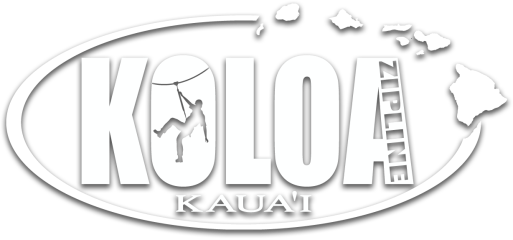PASSIVE AND ACTIVE ZIPLINE BRAKES: WHAT’S THE DIFFERENCE?

It can be an amazing, freeing feeling to fly through the air on a zipline. There’s no better view of Kauai than the one you’ll get zipping through the skies (especially using our unique Flyin’ Kaua’ian harness, which means you can even zip Superman style!) However, one of the main questions we get from zippers is a simple one – how do I stop?
In ziplining, there are two types of braking systems, active and passive brakes. Active brakes depend on the rider acting to initiate the brakes, while passive zip line brakes activate automatically without the rider or guide initiating it. In general, passive brakes are safer for the rider, as there is less for the rider to do, so they can enjoy the ride.
Active Brakes
Active zip line brakes are those that the rider deploys themselves to immediately slow down while zipping. These include systems such as leather gloves and brake pads, where riders intentionally press the glove or pad against the zip line cable to slow down.
Passive Brakes
While active brakes are those activated by the zip line rider, passive brakes are systems already in place to automatically slow or stop the rider. This could include gravity brakes or spring brakes.
Gravity Brakes
Gravity brakes are, in a way, the absence of a braking system. A zip line cable that utilizes gravity brakes is designed so a zipliner will never reach the end of the cable. Usually, the system is designed so the end of the cable is uphill. The uphill portion of the cable will slow the rider until they change direction. Then, they slide back and forth until they rest at the sagging, lowest point of the line.
Spring Brakes
Much like the name implies, spring brakes are large metal coils that compact upon impact. The compression of the spring absorbs the momentum of the rider, bringing them to a stop.
Pros and Cons of Active Brakes
Active brake systems give the zipper more control at the moment, as they are able to immediately use the glove or pad to brake whenever they need. However, while this gives the rider more control, it can be difficult for those who have never ziplined before to master for several reasons. Newer zip line riders may forget how to apply the system while they are zipping, as it is a high-adrenaline moment. Additionally, if a zipliner applies the braking system too soon, they may stop before the platform, needing to use the extra time to pull themselves to the platform. The risk for injury is also higher with a passive system, as zip liners are touching a quickly moving device or cable.
Pros and Cons of Passive Brakes
Passive brake systems are thought to be superior to active brake systems. Riders do not have to worry about controlling their speed or safety, and can instead enjoy the ride. Passive brakes eliminate the possibility of user error or injury due to unsafe braking. Passive systems are always in place and do not need to be reset or taught. They are safe and easy to use for all riders.
Get ready to fly
You won’t need to worry about stopping with Koloa Zipline. All you need to worry about is how you want to zip – backward, headfirst, upside down, or any other position you can imagine! Contact Koloa Zipline today to schedule your first ziplining adventure on Kauai.
